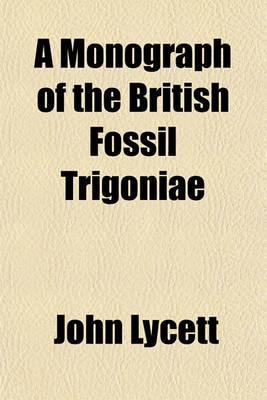Cambridge Library Collection - Monographs of the Palaeontographical Society
2 primary works • 4 total works
Volume 1
A Monograph of the Mollusca from the Great Oolite: Volume 1
by J Morris and John Lycett
Published 11 December 2014
The Bathonian Great Oolite Group is a fossiliferous series of calcareous and argillaceous rocks that are only rarely oolitic in composition. Based upon the collection of physician John Lycett (1804–82), made in quarries on Minchinhampton Common in the Cotswolds, this monograph, written in collaboration with the geologist John Morris (1810–86), covers only that part of the Great Oolite found in this location. However, it also includes species found on the coast of Yorkshire, near Scarborough, which would be included in the Inferior Oolite. The significance of this work is that it is one of just a handful of monographs describing and illustrating the British Jurassic gastropod and bivalve fauna. Having received no significant revision since the late 1940s, it remains a key reference point for Jurassic molluscs. Volume 1 comprises three parts published between 1850 and 1854, covering cephalopods, gastropods and worms as well as bivalves.
Volume 2
The Bathonian Great Oolite Group is a fossiliferous series of calcareous and argillaceous rocks that are only rarely oolitic in composition. Based upon the collection of physician John Lycett (1804–82), made in quarries on Minchinhampton Common in the Cotswolds, this monograph, written in collaboration with the geologist John Morris (1810–86), covers only that part of the Great Oolite found in this location. However, it also includes species found on the coast of Yorkshire, near Scarborough, which would be included in the Inferior Oolite. The significance of this work is that it is one of just a handful of monographs describing and illustrating the British Jurassic gastropod and bivalve fauna. Having received no significant revision since the late 1940s, it remains a key reference point for Jurassic molluscs. Volume 2 comprises the supplement published by Lycett in 1863, covering molluscs found in geological formations besides the Great Oolite.
This is a reproduction of a book published before 1923. This book may have occasional imperfections such as missing or blurred pages, poor pictures, errant marks, etc. that were either part of the original artifact, or were introduced by the scanning process. We believe this work is culturally important, and despite the imperfections, have elected to bring it back into print as part of our continuing commitment to the preservation of printed works worldwide. We appreciate your understanding of the imperfections in the preservation process, and hope you enjoy this valuable book.
A Monograph of the Mollusca from the Great Oolite 2 Volume Set
by J Morris and John Lycett
Published 11 December 2014
The Bathonian Great Oolite Group is a fossiliferous series of calcareous and argillaceous rocks that are only rarely oolitic in composition. Based upon the collection of physician John Lycett (1804-82), made in quarries on Minchinhampton Common in the Cotswolds, this monograph, written in collaboration with the geologist John Morris (1810-86), covers only that part of the Great Oolite found in this location. However, it also includes species found on the coast of Yorkshire, near Scarborough, which would be included in the Inferior Oolite. The significance of this work is that it is one of just a handful of monographs describing and illustrating the British Jurassic gastropod and bivalve fauna. Having received no significant revision since the late 1940s, it remains a key reference point for Jurassic molluscs. Volume 1 (1850-4) covers cephalopods, gastropods and worms as well as bivalves. Volume 2 (1863) comprises the supplement covering molluscs in other geological formations.


